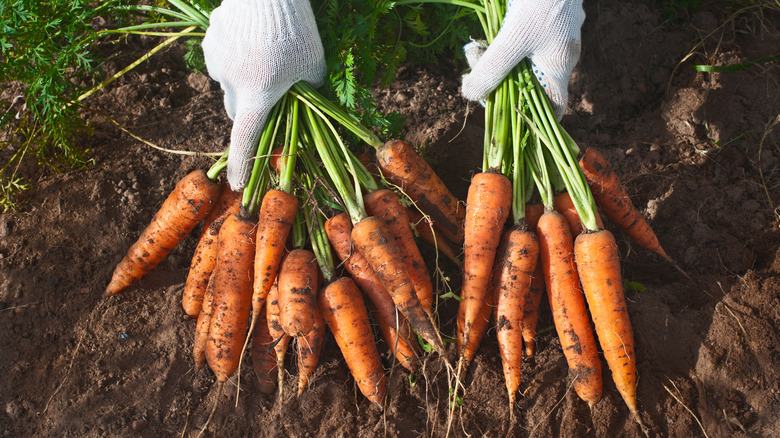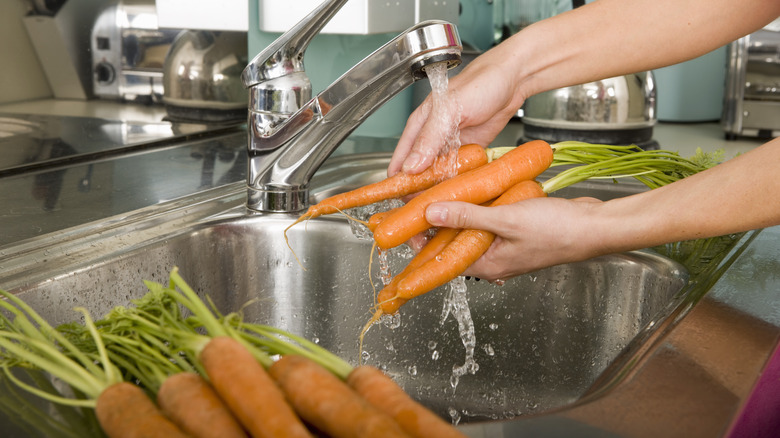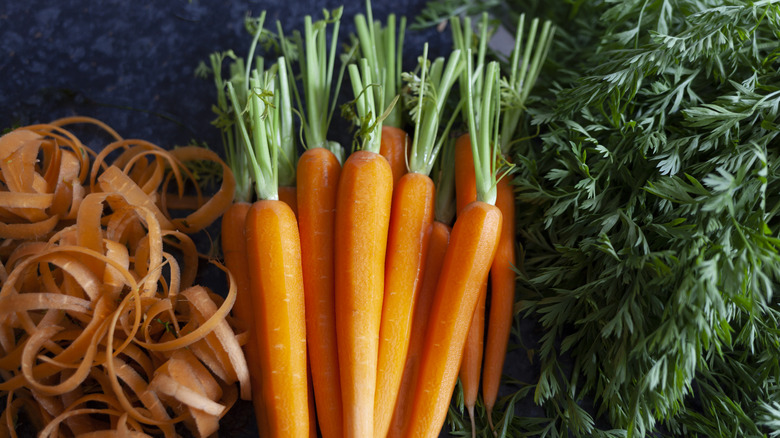What's The Best Method For Cleaning Carrots?
The answer to the question of "What is the best method for cleaning carrots?" depends on two main factors: where they were obtained, i.e. the grocery store or your garden; and what the carrots are going to be used for. Carrots purchased from the supermarket are relatively free from dirt, so if you plan to peel and cook them, a good rinse and peel will do just fine. The dirt will come off with the peels and you can add them to your compost pile. If the carrots have come directly from a farm or garden, or if those grocery store carrots happen to look a little too grubby, then the best things for the job are water and a vegetable scrub brush with stiff bristles.
Carrots are a root vegetable, or specifically, the taproot of the carrot plant. It grows right in the soil, which means it has direct contact with dirt. If you've harvested your own carrots, place them first in a wire basket and tap it gently but firmly to dislodge any large pieces of soil. You can also do an initial spray with water outdoors while they're still in the basket.
Scrub those carrots clean
Now that the large chunks of soil have come off the carrots, it's time to give them a good scrub. You can do this part under running water or by submerging the carrots in a large basin of water. If you're using the latter method, swish the carrots gently in the water — any loose dirt and debris will either fall off or float. Then, with the scrub brush in one hand and a carrot in the other, thoroughly scrub the whole carrot from stem to tip.
Organic and homegrown carrots tend to have more character (that is, are more knobby) than grocery store carrots, as customers have been sensitized to the ideal carrot shape. That said, their more knobby exteriors mean there are more crevices for dirt to get trapped in, so make sure to scrub extra well. No vegetable scrubber? An old toothbrush will work, too. Remember to also only use plain water, as any soap may be absorbed into the carrot's exterior.
After the carrots have been scrubbed, trim the leaves off the top. This is so that the nutrients from the carrot don't continue feeding the leaves, so as to maintain a plump carrot. Pat the carrots dry and chill or freeze them, or use them in your cooking immediately.
Ways to use carrots
Your well-cleaned carrots are now ready to be used in a multitude of ways. Caramelize them as a side for the holidays, shave them into a slaw for a bright and crunchy snack, or grate those precious homegrown carrots for classic carrot cake — but peel them first for the best texture.
Remember to save the scraps from trimming the carrots. The peels and leaves can also be used for cooking in other recipes. Try crunchy carrot tops in a salad or carrot top pesto, and use the peels to add flavor to homemade stock. Any leftover carrots can be preserved for future use, such as quick-pickled carrots for your next Vietnamese sandwich recipe.
It's easy to add carrots to your diet, as they're one of the most ubiquitous vegetables on the planet. Carrots are especially high in beta-carotene, which the body needs to synthesize into vitamin A. They're hardy, which makes them perfect to keep for cooking throughout the week. And they're one of the most affordable vegetables to purchase and are easily accessible to grow at home. Just be aware, though, that carrots won't help you see in the dark.


